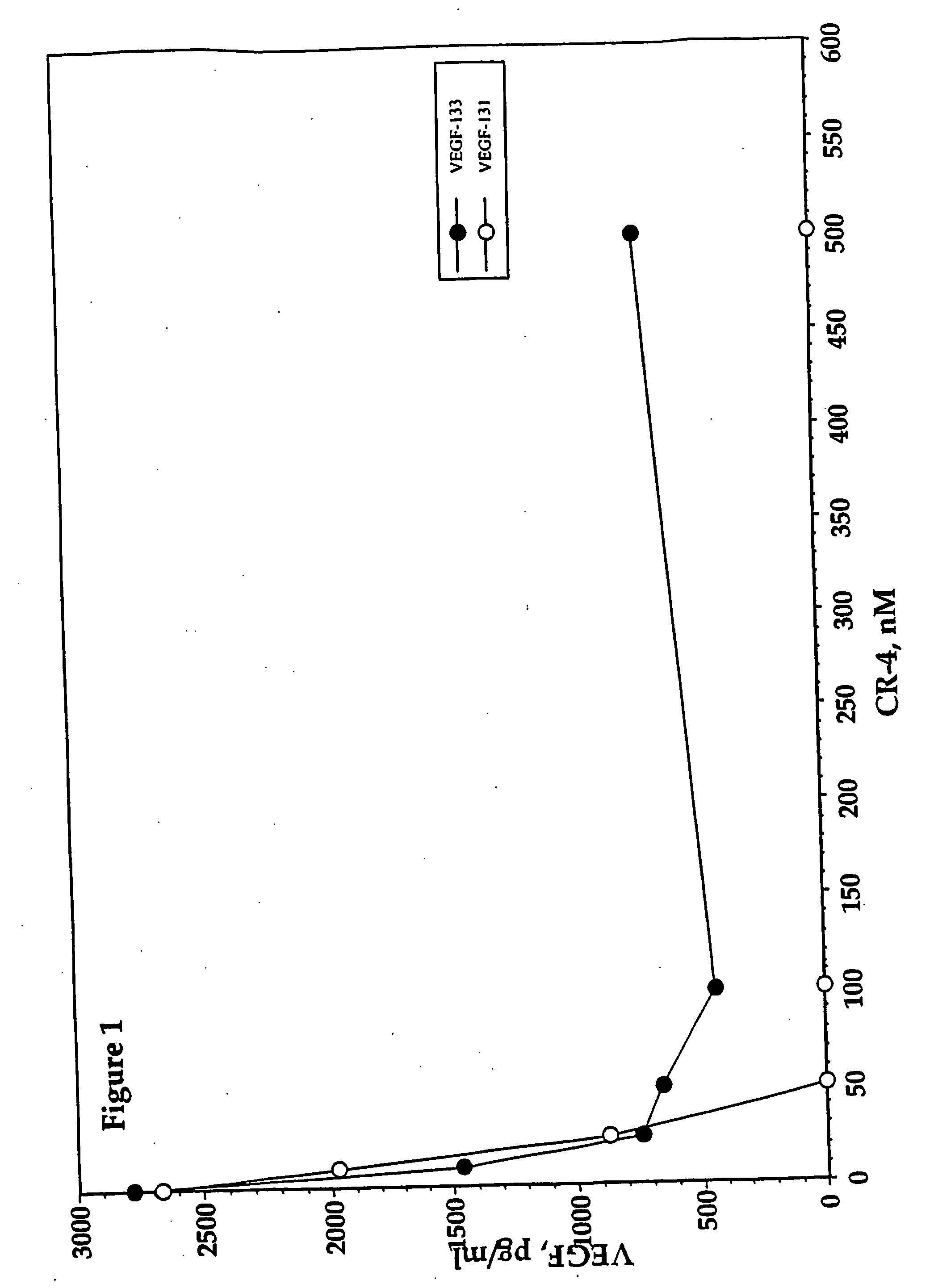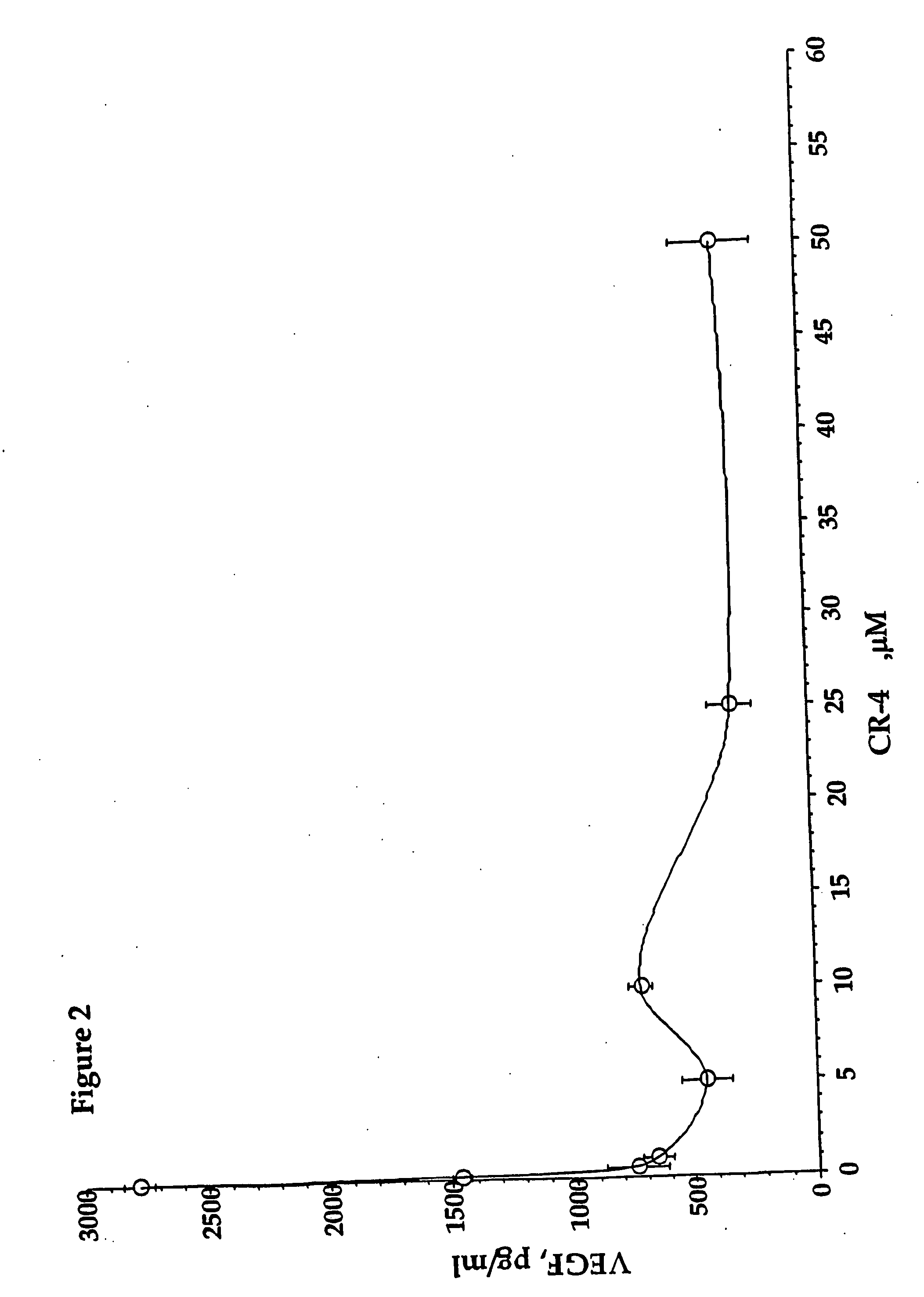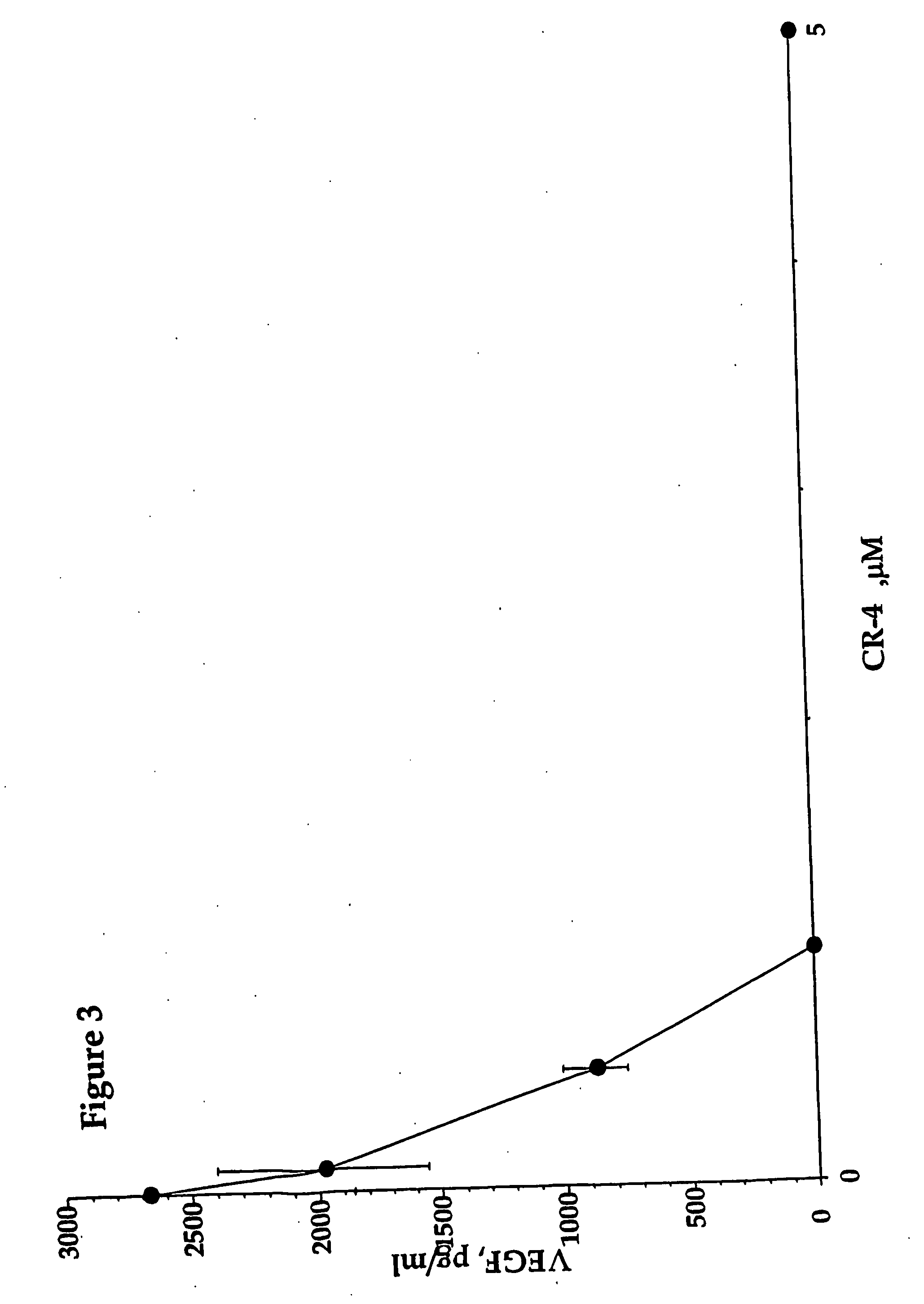Inhibition of vascular endothelial growth factor
a growth factor and vascular endothelial technology, applied in the direction of plant growth regulators, biocide, animal husbandry, etc., can solve the problems of systemic vascular hyperpermeability, and achieve the effect of reducing the secretion level of active proteins and inhibiting the activity of veg
- Summary
- Abstract
- Description
- Claims
- Application Information
AI Technical Summary
Benefits of technology
Problems solved by technology
Method used
Image
Examples
example 1
N-(Cyanoacetyl)3,4-dimethoxybenzylamide (A1)
[0189]
[0190] To 3,4-dimethoxybenzylamine (2.7 ml, 18 mmol) methyl cyanoacetate was added (1.6 ml, 18 mmol). The reaction was heated for 14 h at 100° C. Cooling gave a dark brown solid which was recrystallized from ethanol to give 2.90 g of the product (69% yield).
[0191] The product gave the following analytical data:
[0192] NMR (CD3COCD3, δ, ppm): 3.62 (s, 2H, CH2CN), 3.78 (s, 6H, (OMe)2), 4.34 (br.s., 2H, NHCH2Ph), 6.84 (dd, 1H, J 1.95 and 8.1 Hz, H6), 6.88 (d, 1H, J 8.1 Hz, H5), 6.93 (d, 1H, J 1.95 Hz, H2), 7.80 (br.s., 1H, NH).
[0193] MS, m / e (rel. intensity, %): 235 (19) [M+H]+, 252 (100) [M+NH4]+, 257 (33) [M+Na]+.
example 2
N-(Cyanoacetyl)3,4-dihydroxybenzylamide (A2)
[0194]
[0195] To N-(cyanoacetyl)3,4-dimethoxybenzylamide (Example 1, 0.2 g, 0.85 mmol) in 20 ml of CH2Cl2 boron tribromide was added under argon at −78° C. (0.24 ml, 2.56 mmol) in 2.5 ml of CH2Cl2. After 2 h the reaction was brought to room temperature and stirred overnight. The reaction was cooled to 0° C., 10 ml of 1N HCl was added, the solution was extracted with 3×50 ml of ethyl acetate, the organic phase was washed to neutral pH, dried with MgSO4, and taken to dryness. The residue was purified by silica gel chromatography (CHCl3-MeOH, 20:1) to give a yellow solid (0.07 g, 40% yield). The product gave the following analytical data:
[0196] NMR (CD3COCD3, δ, ppm): 2.83 (s, (OH)2), 3.60 (s, 2H, CH2CN), 4.25 (br.s., 2H, NHCH2Ph), 6.63 (dd, 1H, J 1.95 and 8.1 Hz, H6), 6.75 (d, 1H, J 8.1 Hz, H5), 6.79 (d, 1H, J 1.95 Hz, H2), 7.71 (br.s., 1H, NH).
[0197] MS, m / e (rel. intensity, %): 207 (38) [M+H]+, 224 (100) [M+NH4]+, 229 (2.6) [M+Na]+.
example 3
(E,E)-2-(3,4-Dihydroxybenzylaminocarbonyl)-3-(3,5-dimethoxy-4-hydroxystyryl)acrylonitrile (CR11)
[0198]
[0199] To 3,5-dimethoxy-4-hydroxycinnamaldehyde (0.042 g, 0.2 mmol) and N-(cyanoacetyl)3,4-dihydroxybenzylamide (Example 2, 0.042 g, 0.2 mmol) in 10 ml of ethanol 3 mg of β-alanine was added and the reaction was refluxed for 6 h. Water was added and the solid was recrystallized from 5 ml of ethanol twice to give 0.06 g (75%) of a red solid The product gave the following analytical data:
[0200] NMR (CD3COCD3, δ, ppm): 2.81 (s, (OH)3), 3.89 (s, 6H, (OMe)2), 4.39 (br.s., 2H, NHCH2Ph), 6.68 (dd, 1H, J 1.95 and 8.1 Hz, H6′), 6.76 (d, 1H, J 8.1 Hz, H5′), 6.86 (d, 1H, J 1.95 Hz, H2′), 7.07 (br.s, 2H, H2+6), 7.16 (dd, 1H, J 11.7 and 15.1 Hz, PhCCHCCN olefinic), 7.37 (d, 1H, J 15.1 Hz, PhCH olefinic), 7.70 (br.s., 1H, NH), 7.98 (dd, 1H, J 0.75 and 11.7 Hz, CHCN olefinic).
[0201] MS, m / e (rel. intensity, %): 397 (100) [M+H]+, 414 (14) [M+NH4]+.
PUM
| Property | Measurement | Unit |
|---|---|---|
| Permeability | aaaaa | aaaaa |
Abstract
Description
Claims
Application Information
 Login to View More
Login to View More - R&D
- Intellectual Property
- Life Sciences
- Materials
- Tech Scout
- Unparalleled Data Quality
- Higher Quality Content
- 60% Fewer Hallucinations
Browse by: Latest US Patents, China's latest patents, Technical Efficacy Thesaurus, Application Domain, Technology Topic, Popular Technical Reports.
© 2025 PatSnap. All rights reserved.Legal|Privacy policy|Modern Slavery Act Transparency Statement|Sitemap|About US| Contact US: help@patsnap.com



